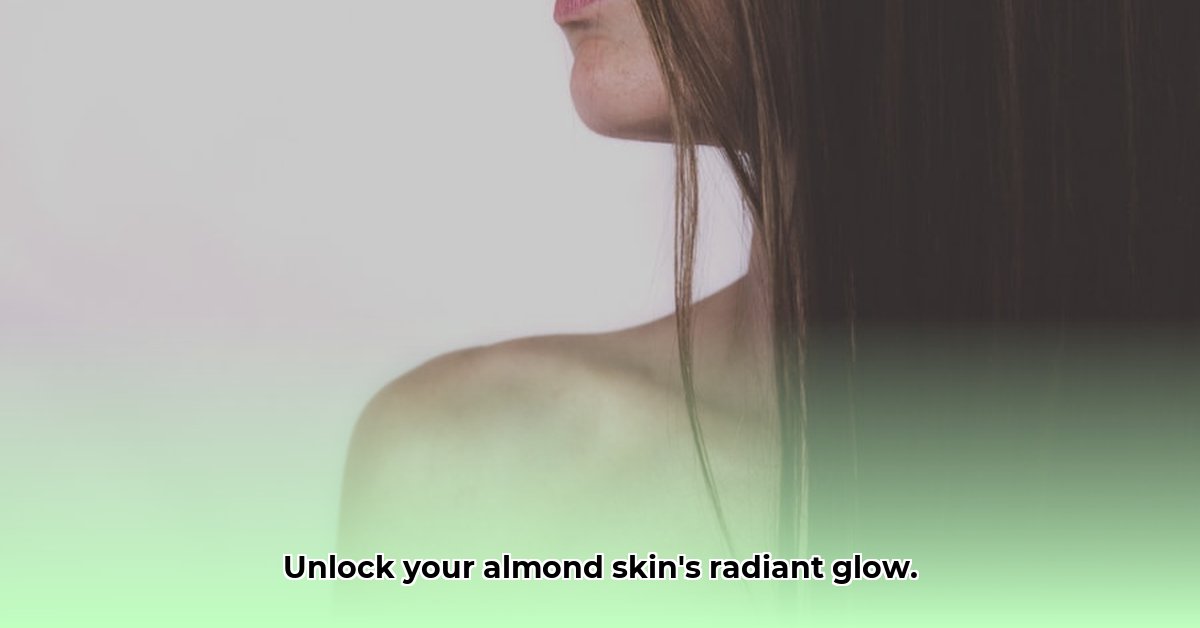Got almond skin? You’re in for a treat! This guide is all about celebrating your gorgeous complexion and learning how to make it shine. We’ll cover everything from the best skincare routine for your skin tone to finding makeup shades that really pop, plus fashion tips and tricks to complete your look. Think of it as your personal roadmap to healthy, radiant skin and a confidence boost. For even more tips, check out this helpful guide on almond skin tones. Let’s dive in and unlock your natural glow!
Understanding and Enhancing Almond Skin Tone
Almond skin—that warm, medium-brown hue often kissed with golden or olive undertones—is a celebration of diversity and natural beauty. It’s a complexion found across various ethnicities, each with its unique nuances. This guide isn’t about changing your skin; it’s about empowering you to embrace and enhance its inherent radiance.
Identifying Your Unique Almond Shade
Almond skin isn’t a monolith. It spans a spectrum from light, creamy beige to richer, deeper browns. The key lies in understanding your undertones:
- Warm Undertones: Characterized by hints of gold, peach, or yellow.
- Cool Undertones: Distinguished by subtle pink, red, or blue hues.
- Neutral Undertones: Displaying an even balance of warm and cool.
Simple Tests to Determine Your Undertone:
- The Vein Test: Look at the veins on your inner wrist. Blue or purple veins suggest cool undertones; green veins indicate warm undertones. If you see both, you likely have neutral undertones.
- The Jewelry Test: Do you look better in gold or silver jewelry? Gold usually complements warm undertones, while silver flatters cool undertones.
- The White vs. Off-White Test: Hold a pure white piece of clothing or paper next to your face, then try an off-white or cream color. Which one makes your skin look brighter and more even? White usually enhances cool undertones, while cream flatters warm undertones.
Knowing your specific almond shade and undertone is the first step to unlocking your skin’s full potential. It informs everything from your skincare choices to your makeup selection.
Crafting Your Personalized Skincare Routine: A Step-by-Step Guide
A consistent skincare routine is the cornerstone of radiant almond skin. It’s an investment in your skin’s health and long-term beauty.
Step 1: Gentle Cleansing
Start your day and end your night with a gentle cleanser. Avoid harsh sulfates (SLS) or fragrances, which can strip your skin of its natural oils. Opt for a pH-balanced formula that respects your skin’s delicate ecosystem.
Product Recommendations:
- Cream Cleansers: Ideal for dry or sensitive skin, providing hydration while cleansing.
- Gel Cleansers: Suitable for normal to oily skin, offering a refreshing and thorough cleanse.
Key Ingredients: Look for ceramides, glycerin, hyaluronic acid, or soothing botanicals like chamomile or aloe vera.
Step 2: Exfoliation (1-3 times a week)
Exfoliation is key to removing dead skin cells, revealing a brighter, smoother complexion, and preventing clogged pores. Choose a method that suits your skin type and sensitivity:
- Chemical Exfoliants: AHAs (alpha-hydroxy acids) like lactic or glycolic acid are great for surface exfoliation and addressing hyperpigmentation. BHAs (beta-hydroxy acids) like salicylic acid penetrate deeper to unclog pores, making them ideal for acne-prone skin.
- Physical Exfoliants: Gentle scrubs with fine particles (like jojoba beads or rice powder) can be effective, but avoid harsh or abrasive scrubs that can irritate the skin.
Important Note: Always start slowly with exfoliation and gradually increase the frequency as your skin tolerates it. Over-exfoliation can lead to dryness, irritation, and even breakouts.
Step 3: Targeted Treatment (Serums)
Serums are potent treatments that deliver concentrated ingredients to address specific skin concerns:
- Vitamin C Serum: Brightens the complexion, reduces hyperpigmentation, and protects against free radical damage. Use in the morning before sunscreen.
- Hyaluronic Acid Serum: Provides intense hydration, plumping the skin and reducing the appearance of fine lines. Can be used morning and night.
- Niacinamide Serum: Minimizes pores, controls oil production, and improves skin texture. Use morning or night.
- Retinol Serum: Addresses fine lines, wrinkles, and acne. Use only at night and start with a low concentration, gradually increasing as tolerated.
Step 4: Hydration Heroics (Moisturizer)
Hydration is essential for all skin types, but especially for almond skin, which can be prone to dryness. Choose a moisturizer that suits your skin type:
- Lightweight Lotions or Gels: Ideal for oily or combination skin.
- Rich Creams: Best for dry or very dry skin.
Key Ingredients: Look for hyaluronic acid, ceramides, glycerin, squalane, shea butter, or plant-based oils.
Step 5: Sun Protection: Your Daily Shield
Sunscreen is non-negotiable, regardless of the weather or your skin tone. Daily sunscreen with at least SPF 30 is crucial for preventing premature aging, sun damage, and hyperpigmentation.
- Broad-Spectrum Protection: Ensures protection against both UVA and UVB rays.
- Mineral Sunscreens: Contain zinc oxide or titanium dioxide and are generally well-tolerated by sensitive skin.
- Chemical Sunscreens: Absorb UV rays and are often more lightweight.
Important Note: Reapply sunscreen every two hours, especially if you’re spending time outdoors.
Makeup Magic: Enhancing Your Natural Radiance
Makeup should enhance your features, not mask them. With almond skin, the goal is to highlight your beautiful complexion.
- Foundation: Finding the right foundation shade is crucial. Consider your undertone when choosing. Test different shades along your jawline in natural light to find the perfect match – the one that disappears seamlessly into your skin. Look for foundations specifically formulated for warm, cool, or neutral undertones.
- Concealer: Use concealer one or two shades lighter than your foundation to brighten under-eye circles and blemishes. Blend it gently for a natural look.
- Blush: Experiment with different blush shades! Peachy, coral, or berry shades often flatter cool undertones, while warm bronzes or terracottas complement warm undertones.
- Bronzer: A bronzer one or two shades darker than your foundation adds warmth and dimension to your face, sculpting your features and creating a sun-kissed glow. Avoid bronzers with orange undertones, which can look unnatural on almond skin.
- Highlighter: A touch of highlighter on your cheekbones, brow bones, and the bridge of your nose instantly elevates your look, adding a radiant glow to your stunning almond complexion. Opt for highlighters with warm, golden, or champagne tones.
- Eyeshadow: Experiment with earthy tones, golds, bronzes, and plums, considering your undertones.
- Lipstick: Almond skin tones can rock a wide range of lipstick shades. Nudes, berries, reds, and corals all look stunning. Consider your undertone when choosing lip color.
Fashion and Style: Dressing to Empower
Your almond skin tone is incredibly versatile when it comes to clothing and accessories.
- Clothing Colors: Jewel tones (emerald, sapphire, ruby), earthy tones (terracotta, olive, mustard), and warm neutrals are all flattering choices. Experiment to find what colors make you feel confident and radiant.
- Accessories: Gold jewelry complements warm undertones, while silver flatters cool undertones.
Celebrity Inspiration: Finding Your Style Icons
Many celebrities proudly showcase almond skin. Look to them for inspiration, but remember to personalize your style to reflect your unique personality.
Possible Celebrity Inspiration:
- Beyoncé
- Zendaya
- Priyanka Chopra Jonas
- Shay Mitchell
Embracing Your Unique Beauty: The Final Word
Embracing your almond skin tone isn’t about striving for perfection; it’s about celebrating your individuality. Your radiant confidence is your most beautiful asset. Explore, experiment, and have fun with your skincare and makeup journey!
- Plant-based Diet Colitis Remission: Success Stories - December 18, 2025
- Plant Based Diet Breast Cancer: Research-Based Benefits - December 16, 2025
- Plant-Based Diet Ulcerative Colitis Remission: Proven Benefits - December 15, 2025










